Argentine comic-book artist Jorge Zaffino died of a heart attack on July 12 at the age of 43. "There are few artists working in comics to whom the word 'genius' applies," said comic writer Chuck Dixon. "Jorge Zaffino was one of those guys. He was a true artist's artist." Comic artist Steve Lieber said of Zaffino's skill at solving storytelling problems: "Any one of these problems requires real work and skill to resolve satisfactorily. Zaffino at his best could handle them all and make the effort invisible, freeing the reader to get lost in the story. His technique changed over time, growing more impressionistic, but he always seemed particularly interested in creating brooding moods and capturing remarkable subtleties of light and shadow. He'd create dense lattices of cross-hatching out of the most apparently casual lines, slapped down across his forms, lighting his figures in a way I'd never seen in comics before. The technique looked maniacal in flat reproduction. God only knows what the originals must have looked like."
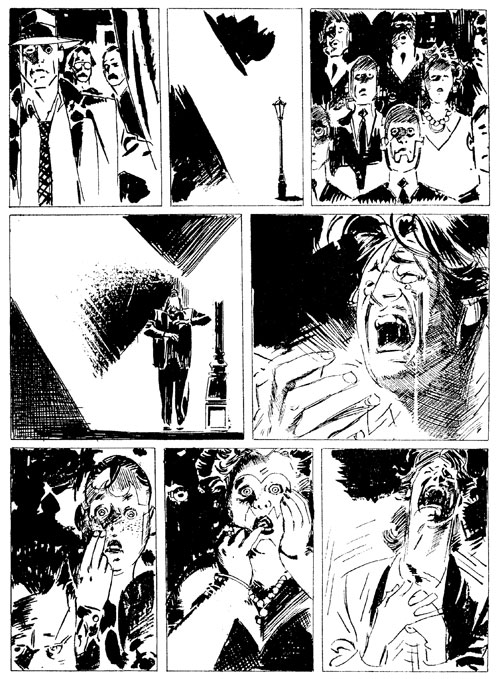
Studying Light
Zaffino was born June 13,1957, the son of Lia Moschini and Jose Zaffino, an art instructor at the Pitman Academy in Buenos Aires. At Zaffino's request, his father enrolled him in private group art classes taught by renowned Argentine art instructor Julio Juaregui. He never went to college. Through the pages of Creepy and Eerie, young Jorge fell under the influence of American comic artists Alex Toth, Gene Colan and Frank Frazetta. Famed Italian comic master Sergio Toppi was an important influence as well. But the influences that would most shape Zaffino's unique drawing style came from outside of comics: Howard Pyle, Rembrandt, Vermeer, Caravaggio and Velazquez. "From fine art, he was almost obsessed by the way light interacts with the objects. He would copy hundreds of Rembrandts in order to figure out how it works," reports his son Gerardo, also an artist.
At 16, Jorge's father took him to the Villagran comic-art studios, run by brothers Enrique and Ricardo Villagran, where he initially worked as an unpaid assistant. "Jauregui was mostly an art teacher; you could say the Villagrans were his comic-art teachers," explained Gerardo. Jorge began at the studio washing brushes, emptying the trash and running errands. Within a year, he was drawing for the studio, doing pencils and background art. Zaffino's work for the Villagrans quickly earned the appreciation of his fellow studio artists. He was making a living at the studio by the age of 19, producing work for Argentina's comics publishers (or "Editorials"). Zaffino worked on the series Nippur de Lagash and Tierra de Elfos, but his most famous series was Wolf, a heroic fantasy written by Robin Wood for Columba Editorial. Wolf would become his most famous work; it is still reprinted in Argentina. He would return to the character throughout the '80s.

Coming to America
Zaffino's work first made it to the U.S. with Ricardo Villagran, who was then working with writer Chuck Dixon. Dixon saw Zaffino's art among samples Villagran had brought, and he wrote a story specifically with Zaffino in mind. Zaffino visited Dixon in America, using money he had saved from his studio work and from a series of children's book illustrations done for friends. Dixon said of meeting Zaffino, "On a personal level, he was a charming guy with a great sense of humor. He spoke no English and I no Spanish. But I always enjoyed his range of facial expressions as things I said to him were translated. Particularly if what I or another were saying was an attempt at humor. That dawning of realization and then his smile and laughter as he got the joke would crack everyone up all over again.”
The story they produced together was the three-issue series Winterworld, published by Eclipse in 1987. Zaffino worked from English scripts translated into Spanish by Ariel Maudet, who accompanied him on his U.S. trip. Gerardo Zaffino said of the guns drawn in Winterworld, "He asked me to give him my G.J. Joe cards to do the Winterworld saga. Of course, he made some changes.”
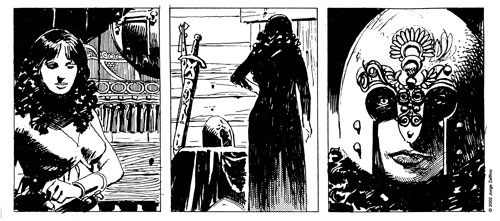
Later, Marvel editor Carl Potts helped introduce Zaffino to the mainstream U.S. market: "During this period, I was working to turn the Punisher into a major leading character. One of the Punisher projects I had in the works was a graphic novel written by Jo Duffy. The Punisher character and Jo's script seemed like good matches for Jorge's dramatic and moody style. Jorge teamed up with Jo and the result was the very successful Assassins Guild graphic novel (1988). Jorge's work was brilliant. I remember being blown away whenever Jorge mailed in a new batch of pages. Other editors and artists would sometimes visit my office and dig into the flat files to get a look at Jorge's latest work." Zaffino's detailed depictions of New York in Guild were aided by reference photos he took of the city during a second visit to the U.S. Marvel artist Walter Simonson said, "I was intrigued by his Winterworld work, the first of his art I saw. And I was blown away by [Guild]. That particularly graphic novel still remains a favorite of mine and, to this day, I keep it on the bookshelf below my taboret for easy access and reference. It isn't that I ever find myself drawing the Punisher but, as with all the material that captures my imagination, I find it refreshes my own work to go back occasionally and reacquaint and re-inspire myself with another look."
Zaffino and Dixon teamed up on a second Punisher graphic novel, Kingdom Gone, in 1990. "This was another great project for Jorge," Potts said. "Again, it was just the right project for him and the graphic novel was very successful. Jorge and Chuck made a great team. As with the first Punisher graphic novel, Jorge gave all of his players distinct looks, body language and personalities. The tropical island setting in Kingdom Gone was very different from the urban landscape in Assassin's Guild. Jorge excelled in portraying both environments."
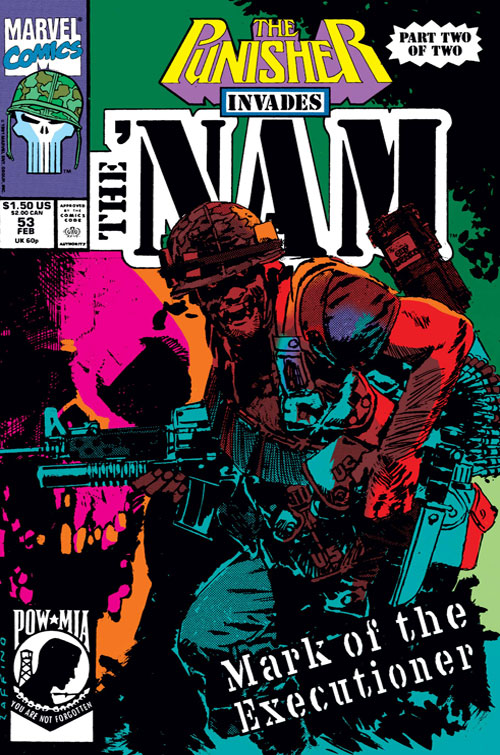
Darker Material
Zaffino and writer Dan Chichester began a series of collaborations with Critical Mass, an edgy Marvel series written by Chichester and divided into chapters drawn by different artists. Here, Zaffino shook off the detailed realism of his earlier work, developing a calligraphic economy of line that accentuated his emerging expressionistic style. "I think Toth always fed his simplicity," said Zaffino's son Gerardo. "Although he covered the pages with lines, the composition was very simple. I remember watching his pencils and saying, 'Hey, when are you going to finish them?”
Other projects of note during this period were Hoover (a two-part science-fiction detective story written by Carlos Trillo and one of Zaffino's occasional returns to the international market), two Hellraiser stories ("The Vault" written by Marc McLaurin in Hellraiser 2, and "The Devil's Absolution" written by R.J.M. LOfficier in the Hellraiser Summer Special), a Conan story ("The Horned God," written by Dixon for the black-and-white magazine Savage Sword of Conan), and Seven Block (a one-shot written by Dixon in 1990 for Marvel's Epic imprint). With these books he moved from more escapist adventure material toward a darkly expressionistic and personal style.
Comic artist Bill Reinhold summed up the impact Zaffino's work was beginning to have on his peers in the U.S. "I first saw Jorge's work in the Winterworld series for Eclipse. I thought that was nice art, but it was his Punisher, Conan, Hellraiser and, Seven Block work (they should re-color that story and use his original painted cover) that blew me away. I was fortunate years ago to trade art with him through Chuck, Dixon. Chuck said that Jorge wanted to collect American comic-book art. So I have a page from Punisher: Assassin's Guild and from his Conan story. I'm sorry that we don't have more Zaffino jobs to look forward to.”
Zaffino was well suited to drawing serious, brutal, emotional subject matter.A personal favorite. of his was a series of covers he did for Marvel's The 'Nam. Chuck Dixon says, "His work displayed a raw power that is unmatched. He was like Joe Kubert in that you can see his 'hand' in the work. What seems like delicate and deliberate line work in reproduction would, on close inspection of the pages, be revealed as brutal and varied ink lines that looked as though they were thrown down casually. But they weren't. Jorge worked hard to achieve that look of spontaneity. Often he would finish an entire sequence only to tear it up and start over again."
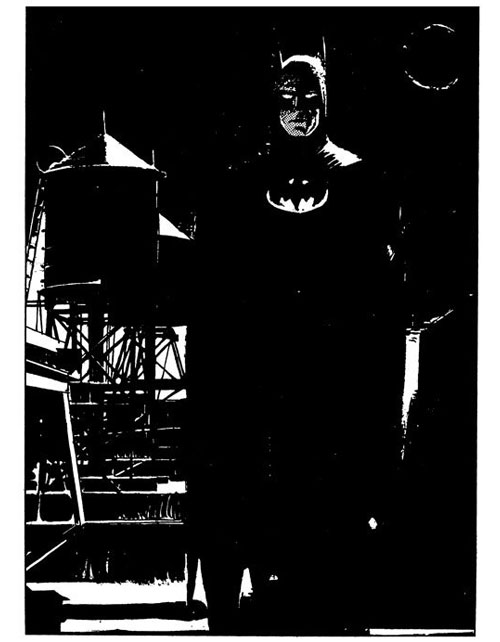
Declining Output
Continuing with Chichester, Zaffino drew a dark, ongoing series called Terror Inc. for Marvel, reviving the Schreck character from Critical Mass. Zaffino began the series at the height of his ability. Though his skills never wavered, his work had changed by the seventh issue. As Dixon explains, "He had a few admirers on editing staffs but they tried to use him on monthly schedules and Jorge wasn't built for that." Gerardo adds, "By the time he was doing Terror Inc. he wasn't doing too well personally. If it wasn't for the personal issues he was facing, he wouldn't have had any trouble with the deadlines."
Zaffino's goodbye to the U.S. comic market was a Batman story called "The Devil's Children," written by Dixon, which appeared in Batman Black and White #2. Though it's a simple detective story, his stark visuals carry great emotional impact. As his son said, "He wanted to create a mood, a climax. You can almost walk among the characters in his comics."
After leaving work in the States, he spent time reflecting on his art and his personal life. "Jorge had not been well for many years, as he suffered from a persistent depression which is the reason for his producing so very little work these last years," said fellow Argentine comic artist Quique Alcatena to Comicon.com's Splash. "This perhaps excessive professionalism brought him into conflict with deadline-minded editors, and Jorge got fewer and fewer jobs. Moreover, he was in a search for utter simplicity and synthesis in his line - he reneged from the more elaborate work he produced in the late '80s as being too cross-hatched, a fact which did not fail to earn his peers' applause, but which did not make him reader-friendly." According to Dixon: "He preferred special projects that allowed him to delve into the story and fully explore it. He was no prima donna or temperamental soul. An easier guy to work with I cannot imagine. He just wanted the best work from himsef. Many of the projects that I and others presented are probably still gathering dust on shelves somewhere."
There is still English-language material by Zaffino which has yet to see print. "Chuck then approached me about publishing Wintersea" says Carl Potts, "the follow up to the Winterworld miniseries. I was all for that! Unfortunately, the project did not get published before Marvel hit hard times and the company abandoned publishing creator-owned titles." There is also a host of foreign work that has never been translated. In addition to Wolf and Hoover, a 24-page sketchbook of his work, titled Illustraciones, was published in Argentina in the '90s by Abel Saidman and Carlos Devizia. In recent years, Zaffino had focused on his painting, of which the U.S. market has only seen glimpses, and continued to illustrate books published in Argentina.
Zaffino's work had a powerful impact on artists whom he would never meet, like artist Tommy Lee Edwards: "I was struggling with how to turn my thinking into strictly black and white. How to create depth? How to render the form on an object or figure? Studying Zaffino's work aided me in ways I will always appreciate. He answered many of my questions, and started me on asking new ones. He helped me gain the courage to draw with a brush." John Paul Leon told the Journal, "Jorge Zaffino is a special artist to me. Unfortunately; I never met the man, but his work is so vigorous and audacious that I can only guess he must have been very passionate. His work does not instruct, it questions."
(For more information, visit www.jorgezaffino.com [currently abandoned, but available via archive.org]. Special thanks to Gerardo Zaffino, Lia Moshcini, Victoria Guerrero, Jesse Hamm, Gabriel Greif, Mike Manley and Chuck Dixon for their help with this piece.)
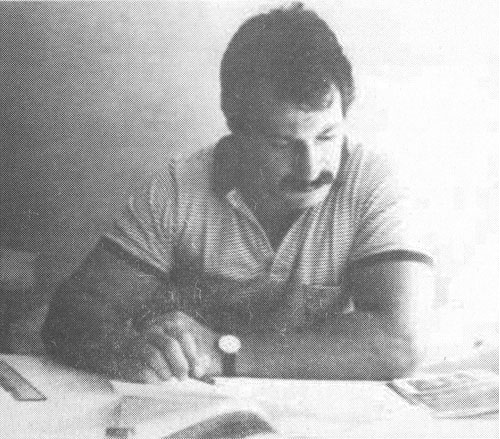
[Originally published in The Comics Journal #248, November 2002. Images, from the 1998 reprinting of Hoover, from Illustrationes, from an unfinished comic page, cover of The 'Nam Feb. 92, an unused Batman drawing from Illustrationes, and an uncredited photo of Jorge Zaffino]
No comments:
Post a Comment